THE LAB

Open residency project
Ocular Lab
West Brunswick
WEEK TWO
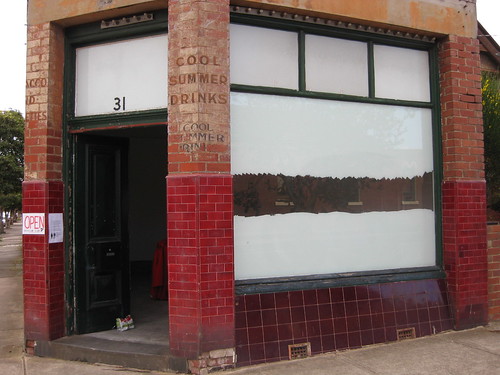

NOTES.

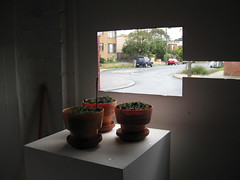
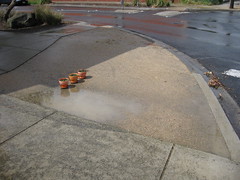
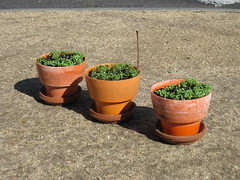
|
Clover seeds pushing up through soil and sprouting.
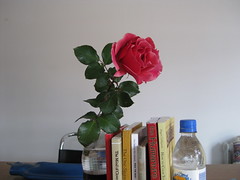

|
The red rose Bianca brought on my first day, opening and changing.
READING:
The Mind of Clover
Essays in Zen Buddhist Ethics
Robert Aitken
North Point Press, 1984
‘You and I come forth as possibilities of essential nature, alone and independent as stars, yet reflecting and being reflected by all things. My life and yours are the unfolding realization of total aloneness and total intimacy. The self is completely autonomous, yet exists only in resonance with all other selves.’
p.13
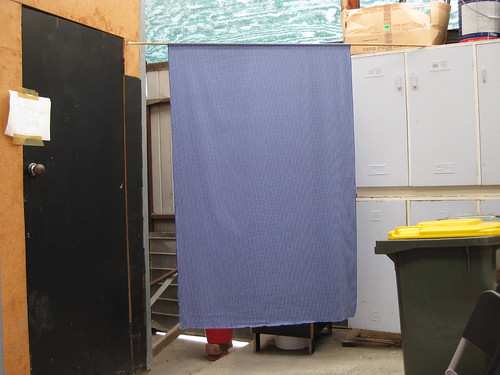
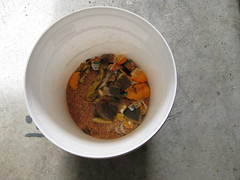
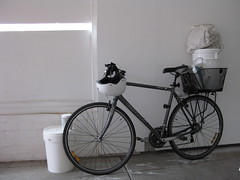
|
Finishing the curtain for the humanure loo, offering a breezy nod to modesty and a counterpoint to the boxy confines of the flushing toilet. The organic waste from week one at the Lab combined with bucket contents and biked back to the heap site.

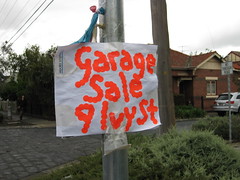
|
Handmade signs on Union St and a great example of computer-free font making, which I’d been thinking about.

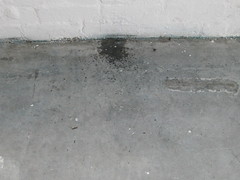
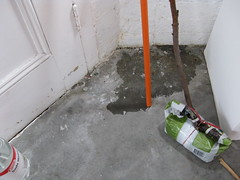
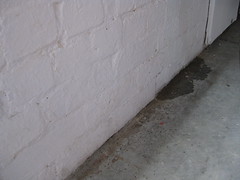
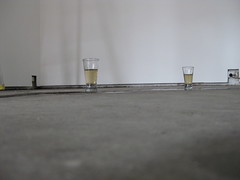
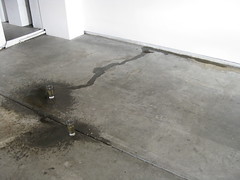
|
This week was extraordinarily cold, with frequent heavy downpours. The roof started leaking in correspondence with the stains and shapes on the floor. Observing where water enters the room under heavy rain, catching the two major drips in glasses. This proved useful when the builder who’s been engaged to repair the ceiling wandered in to sight the job, asking where the main leaks were. Water drawing on the floor as it finds the lowest level.
READING:
The Humanure Handbook: a guide to composting human manure
Joseph Jenkins
2005, 3rd edition
‘Feces and urine are examples of natural, beneficial, organic materials excreted by the bodies of animals after completing their digestive processes. They are only “waste” when we discard them. When recycled, they are resources, and are often referred to as manures, but never as waste, by the people who do the recycling.
We do not recycle waste. It’s a common semantic error to say that waste is, can be, or should be recycled. Resource materials are recycled, but waste is never recycled. That’s why it’s called “waste”. Waste is any material that is discarded and has no further use. We humans have been so wasteful for so long that the concept of waste elimination is foreign to us. Yet, it is an important concept.
When a potato is peeled, the peels aren’t kitchen waste – they’re still potato peels. When they’re collected for composting, they are being recycled and no waste is produced.
Composting professionals sometimes refer to recycled materials as “waste”. Many of the people who are developing municipal composting programs came from the waste management field, a field in which refuse has always been termed “waste”. Today, however, the use of the term “waste” to describe recycled materials is an unpleasant semantic habit that must be abandoned.’
pp. 7-8
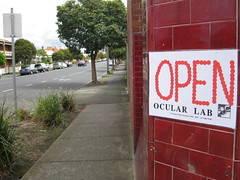
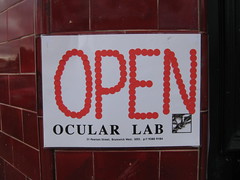
|
Elaborating on an existing Lab sign with the gallery’s red dot stickers.
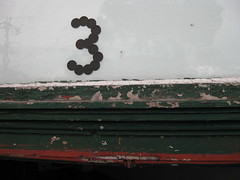
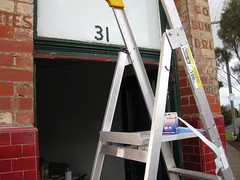
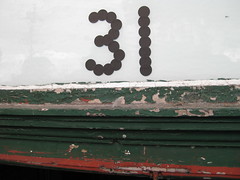
|
Two days in a row the postie stuck his head in to ask me what number the Lab was, 31 or 33? Improvising a street number with stickers over the doorway to make it clear.
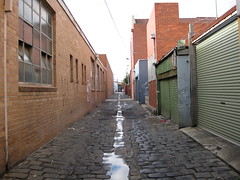
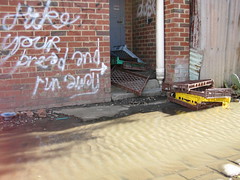
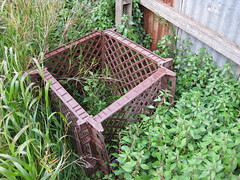

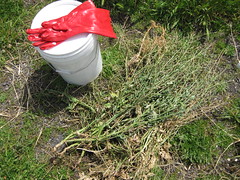

|
Walking in the laneways around the second site to find materials for the walls of the humanure compost heap. Finding a sunny discreet spot, clearing ground, rigging it up and laying down the first layers of kitchen scraps and bucket contents with surplus straw and weeds from Kylie’s brain garden.
READING:
The Humanure Handbook: a guide to composting human manure
Joseph Jenkins
2005, 3rd edition
‘Shortly after I published the first edition of this book, I was invited to speak to a group of nuns at a convent… It was Earth Day, 1995. The presentation went well. After I spoke, the group showed slides of their gardens and compost piles, then we toured their compost area and poked around in the worm boxes. A delightful lunch followed, during which I asked them why they were interested in humanure, of all things.
“We are the Sisters of Humility,” they responded. “The words ‘humble’ and ‘humus’ come from the same semantic root, which means ‘earth’. We also think these words are related to the word ‘human’. Therefore, as part of our vow of humility, we work with the earth. We make compost, as you’ve seen. And now we want to learn to make compost from our toilet material.”…This was deep shit. Profound.
A light bulb went off in my head. Of course, composting is an act of humility… The exercising of the human spirit can take many forms, and the simple act of cleaning up after oneself is one of them.’
pp. 69-70
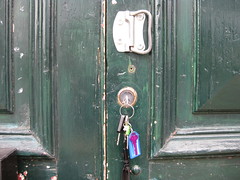
|
My key to the Lab must be a copy of countless generations of copies, and it continued to be tricky to get the door open as I arrived each day. Sometimes it took ten minutes of jiggling, jostling, rising frustration and absurdity. Until Alex dropped in one day and demonstrated the knack of downward pressure on the lower edge and I got the feel for it.
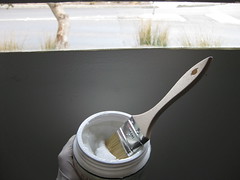
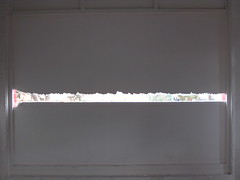
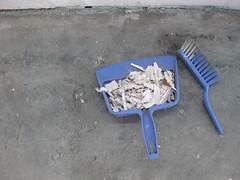

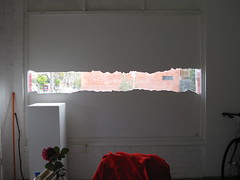
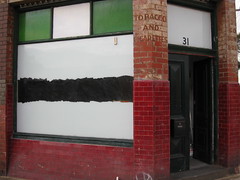
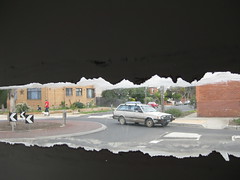
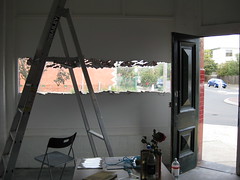
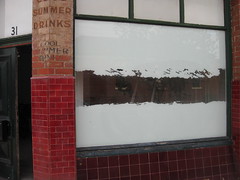
|
Starting the process of stripping the paint from the Pearson and Albert St window panes. Finding a rhythm of applying stripper, scraping, sweeping and cleaning each day. Working with care on the Albert St window and sensitive to the movement of the glass due to the deteriorated upper timber brace. Realising I’ve been trusted to work with the window when it’s a bit risky to do so. Thinking about who cleans and cares for spaces like these, and the work by Julie Davies a few people have mentioned to me, in which she documented artists de-installing their work at the Lab and returning the room to the condition they found it.
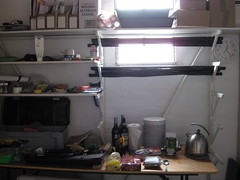
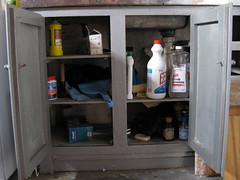
|
Thinking about the repertoire of tools and kitchen things and cleaning products common to artist-run initiatives – what’s required to maintain a room and the bodies that occupy it.
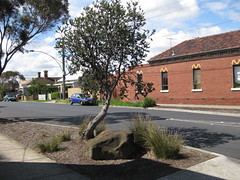
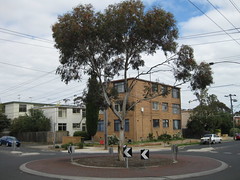
|
The nearest living things – a banksia and piece of bush rock in the Pearson St verge planting, and the eucalypt gracing the centre of the roundabout. Standing in the street chatting to Alex about the history of car racing and accidents on the street, roundabout and verge design, we came to notice that the tree is crowned with red blossoms and just on the brink of flowering.
READING:
How to Cook Your Life
From the Zen Kitchen to Enlightenment
Zen Master Dogen and Kosho Uchiyama Roshi
Translated by Thomas Wright
Shambhala, 2005
‘It is written in the Chanyuan Qinggui that “the function of the tenzo is to manage meals for the monks”…
I shall now take up the work of the tenzo covering a period of one complete day. After the noon meal the tenzo should go to the tsusu and kansu to get the rice, vegetables and other ingredients for the following morning and noon meals. Once he has these, he must handle them as carefully as if they were his own eyes. Renyong of Baoneng said, “Use the property and possessions of the community as carefully as if they were your own eyes.” ‘
pp. 3-4
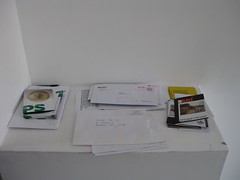

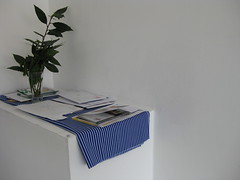
|
Observing the piles of mostly unopened mail gathering here and there around the Lab. Mindful of the habit of galleries to send their printed invites and programs to other galleries, and that in this instance they go unreceived. The Lab has no noticeboard or space provided for ephemera, and a whole lot of postage and colour printing lingers then goes straight into the recycling.



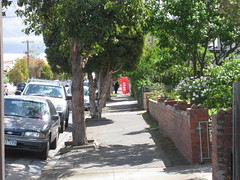
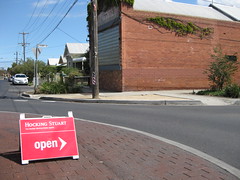
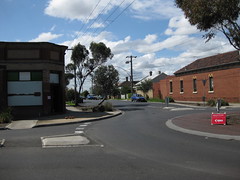
|
Arriving on Saturday, a real estate agent showing a house on Albert St had placed a snappy ‘Open’ sign on the corner opposite the Lab. As I played with moving the sign and pointing it towards the gallery, a car promptly pulled up. By the time the woman reached me, she thought to ask if I was an artist taking a photo of the sign, or was this property open? Because she was looking to buy a shopfront. I explained I was mucking around with the sign, and was open, but she turned straight back to her car a little crossly, saying that it was a “little bit deceptive”. Not long after a friendly young agent in an enormous Audi pulled up and collected the sign. Two more houses were open for viewing on the street over the weekend, and attention drawn with red flags and signs placed prominently on the roundabout.

|
Archetypal ARI note on the door when I need to duck out.
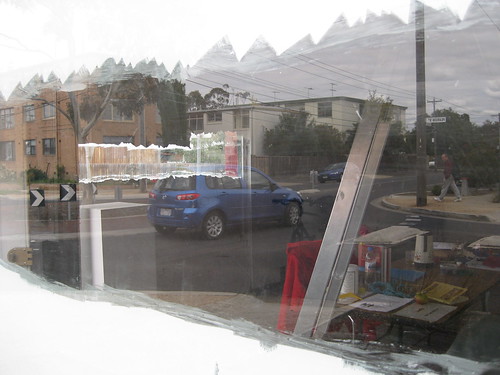
|
A first glimpse of the milky layered vision created by heightened reflections on the window glass as I strip it. Seeing through, behind and beyond the room, its contents and surrounds.
RESOURCES
Humble Pile, a nutrient recovery project by Nance Klehm
The Humanure Handbook by Joseph Jenkins
WITH THANKS
To my many hosts and helpers…Sandra Bridie, Tom Nicholson, Clare Land, Julie Davies, Alex Rizkalla, Ocular Lab, Thea Rechner, Lucas Ihlein, Josie Cavallaro, Anne Kay, Bianca Hester, Kylie Wilkinson, John Najjar Furniture Forever.


